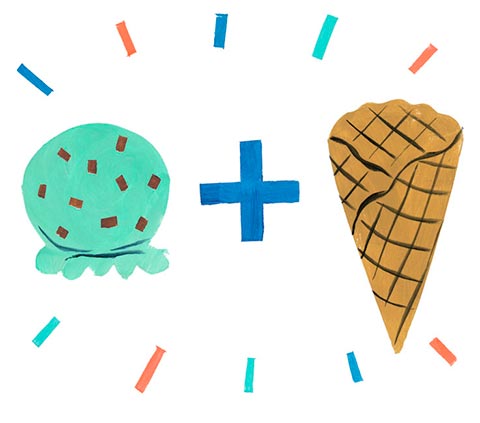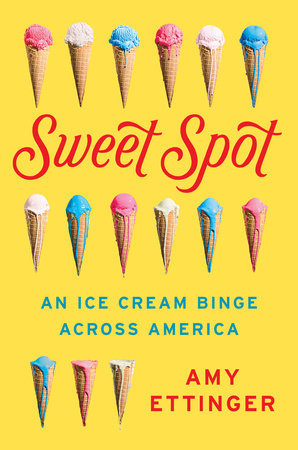Get the Scoop: 5 Things You Never Knew About Ice Cream
by Amy Ettinger
When I was a kid, my dad created elaborate ice cream sundaes out of Rocky Road, Hershey’s syrup, and maraschino cherries. It was the only time in my childhood that I remember my two older brothers and I calling a truce for long enough to finish the melting heaps of ice cream.
Sharing scoops with my daughter brought me back to these quiet, short-lived family moments, and I decided to investigate the history of ice cream in America in a new book that shares anecdotes from my childhood along with the stories of the people who make our frozen treats. During my research and reporting for Sweet Spot: An Ice Cream Binge Across America, I uncovered some surprising truths about America’s favorite dessert. Here are some of my favorite fun facts to share with ice cream eaters of all ages:

1. Our national love of the dessert started with George Washington. Washington and his wife, Martha, served ice cream at many important dinners in New York and Philadelphia, and had fancy ice cream bowls and serving spoons at their home in Mount Vernon. Washington wasn’t the only president to enjoy ice cream. Thomas Jefferson recorded America’s first ice cream recipe, which was a difficult 18-step process. James Madison, Franklin Roosevelt, and President Nixon also enjoyed ice cream at the White House. Americans now eat about 22 pounds of ice cream per year and spend about $10 billion dollars annually on the treat.

2. The ice cream cone was invented in the United States in 1904 at the St. Louis World’s Fair, but there’s still a debate about who gets credit for making the first one. At least seven separate food vendors at the fair say they are the ones who first rolled a waffle into a cone shape and added ice cream to it. Most ice cream historians believe the credit goes to Ernest Hamwi, a Syrian who was selling a pastry right next to an ice cream vendor. The cone became a hit because it’s a cheap and easy way for customers to buy a scoop and take it to go.

3. Ice cream chefs put some pretty unusual things in ice cream and they’ve been doing it for hundreds of years. First Lady Dolley Madison loved oyster ice cream and got the mollusks fresh from the Potomac. In the 19th century, chefs were making ice cream with Parmesan cheese, rye, asparagus, chestnut, and truffle. Today’s ice cream flavors can be equally weird, ranging from celery sorbet to goat cheese and meat. Some people even enjoy putting bugs in their ice cream!

4. In the 19th century, doctors prescribed ice cream sodas as a way for people to get healthy. Soda fountains used to be located in pharmacies and that was where people went to get their medicine. At the time, medicine came in the form of tinctures that were often bitter — so pharmacists added them to refreshingly sweet drinks to dull their sharp taste. Unfortunately, these “cures” were sometimes poisonous, and even included ingredients like arsenic and strychnine. Not surprisingly, people often got sick instead of getting better. Eventually, the pharmacies moved out of the soda fountains, and the fountains later became a place where people could socialize and enjoy a shake or a sundae.

5. Eating ice cream for breakfast may make you smarter. A Japanese researcher recently tested morning ice cream eaters and found that they were more alert and less mentally irritated than those who hadn’t had a scoop. Nobody knows yet why this might be the case. This isn’t the first time that ice cream’s effects have been researched. Scientists have found that the more ice cream you eat, the more you crave it. And in the 1950s, a Cornell University scientist suggested eating ice cream twice a day as part of a healthy diet.
Want to learn more about ice cream and its fascinating history? Check out Amy Ettinger’s Sweet Spot: An Ice Cream Binge Across America.

